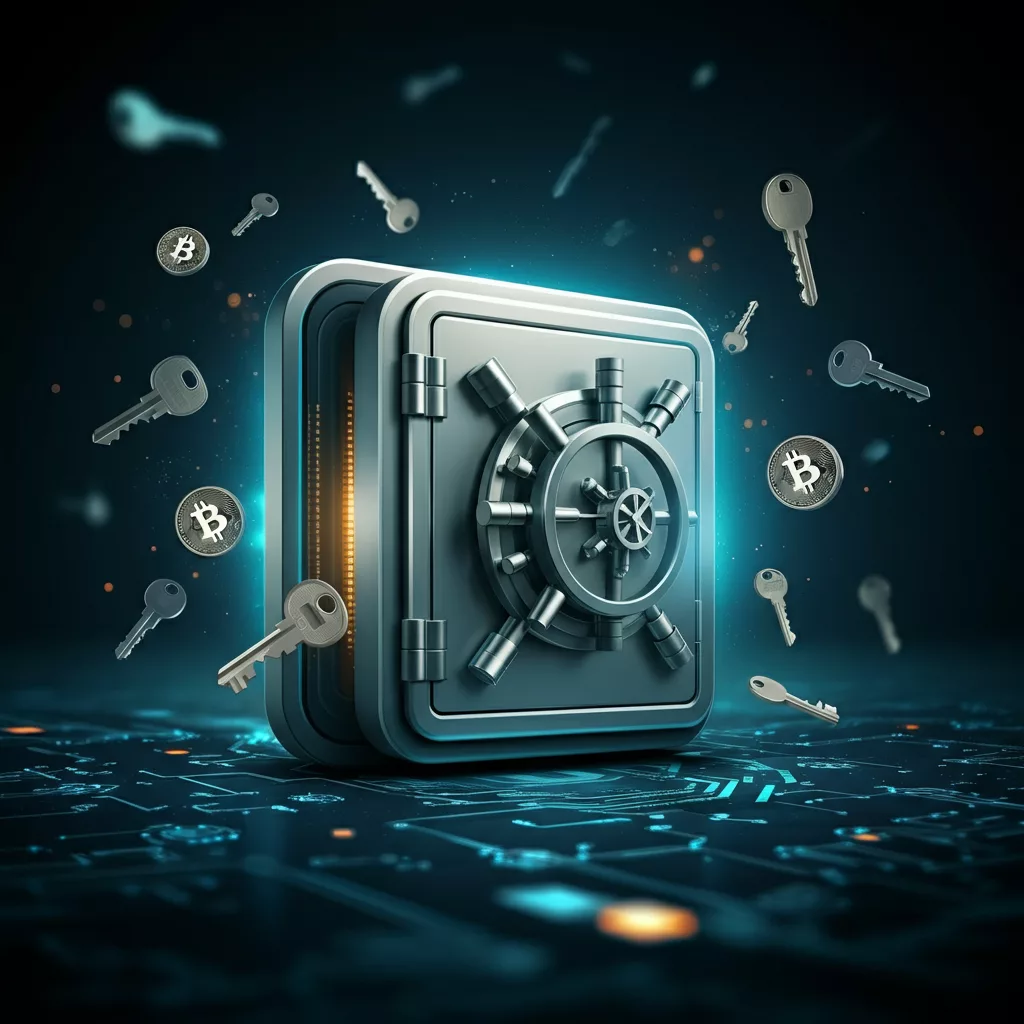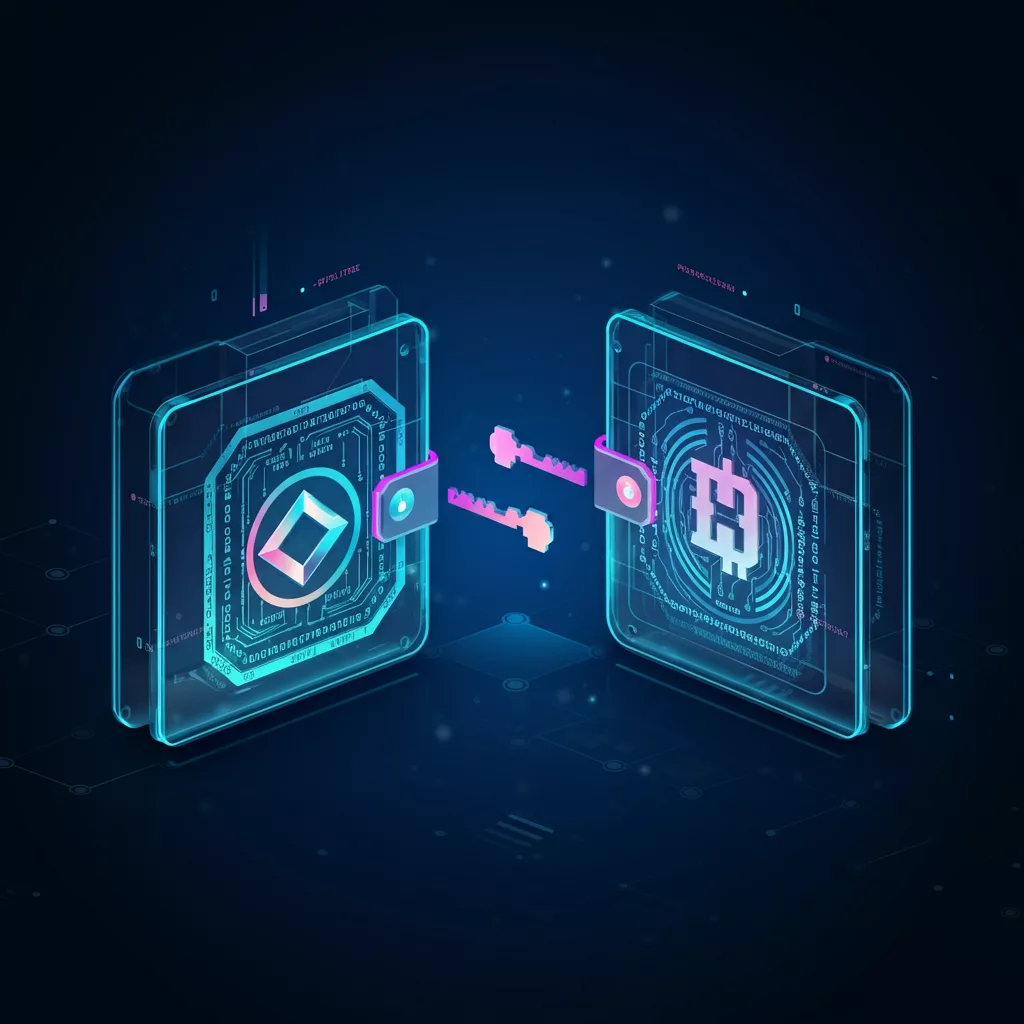The blockchain world has revolutionized finance by creating decentralized, secure systems for storing and transferring digital assets. At the heart of these transactions are cryptocurrency wallets – indispensable tools that enable users to manage their digital currencies with confidence. Whether you’re a seasoned crypto enthusiast or a blockchain beginner, understanding cryptocurrency wallets is essential for navigating this rapidly changing landscape.
This guide will shine a light on wallets in the blockchain world, their types, security measures, functionality, and evolution, helping you choose the right one for your needs.
1. Understanding the Basics: What are Cryptocurrency Wallets?

A cryptocurrency wallet is a digital tool that allows you to securely store, send, and receive digital currencies like Bitcoin, Ethereum, and more. These wallets don’t store the actual cryptocurrencies but instead hold the private and public keys vital for accessing your funds on the blockchain.
Why are wallets important?
Funds on the blockchain cannot be accessed without the correct private key, and wallets are the mechanisms that safeguard these keys. They provide a seamless way to perform transactions, manage assets, and monitor blockchain activity. Without a wallet? That’s like leaving your money in the open – accessible to anyone with malicious intent.
2. Types of Wallets: A Detailed Comparison
Not all wallets are the same. The type you choose depends on your priorities – whether it’s security, portability, or simplicity.
1. Hardware Wallets
- What they are: Physical devices, often resembling USB drives, designed to store your cryptographic keys offline (cold storage).
- Pros: Highly secure, resistant to hacking, immune to malware.
- Cons: Not as convenient for frequent transactions.
- Popular Example: Ledger Nano S
2. Software Wallets
- What they are: Applications installed on your computer or smartphone that store your keys digitally (hot storage).
- Pros: Convenient for regular transactions, easy to use.
- Cons: Susceptible to hacks and malware.
- Popular Example: MetaMask
3. Paper Wallets
- What they are: Physical pieces of paper containing printed keys or QR codes for offline storage.
- Pros: Immune to digital hacks.
- Cons: Vulnerable to physical damage or loss.
4. Brain Wallets
- What they are: Wallets that rely on users memorizing passphrases to access their funds.
- Pros: Eliminates the risk of physical theft.
- Cons: Memory-dependent and unsafe if the passphrase is too simple or forgotten.
3. Security Measures and Best Practices

Given the prevalence of wallet hacks, prioritizing wallet security is non-negotiable. The Mt. Gox hack of 2014 – where over 850,000 bitcoins were stolen – remains a cautionary tale for anyone navigating the crypto world.
How can you protect your assets?
- Use Two-Factor Authentication (2FA): Add an extra layer of security to your wallet.
- Backup Your Wallet: Create secure backups of your keys, ideally using encrypted storage options.
- Use Cold Storage: Store substantial funds in offline wallets to avoid exposure to online risks.
- Regular Security Updates: Ensure your wallet’s software is up to date for the latest security patches.
- Keep Private Keys Private: Never share your private keys with anyone.
4. Wallets and Blockchain Transactions

Cryptocurrency wallets are critical intermediaries in blockchain transactions. Here’s how it works:
- Step 1: The recipient shares their public key (or wallet address).
- Step 2: The sender authorizes the transaction using their private key.
- Step 3: The transaction is broadcasted to the blockchain, verified by miners/validators, and added to the blockchain ledger.
The seamless interaction between wallets and blockchain ensures your funds aren’t just secure but also immutable – every transaction is recorded permanently.
5. The Future of Wallets in the Blockchain Ecosystem

The evolution of wallets continues as the blockchain ecosystem matures. More advanced features, such as biometric authentication, multi-signature approval processes, and integration with decentralized finance (DeFi) applications, are setting the stage for the next generation of wallets.
Industry leaders like Changpeng Zhao (CZ) predict a rise in multi-chain wallets – single wallets that allow users to manage assets across multiple blockchains seamlessly. Additionally, as blockchain penetrates industries like gaming and real estate, wallets with broader use cases will gain traction.
Quote from CZ:
“The future of wallets isn’t about choice – it’s about enabling seamless experiences across all blockchains and applications responsibly.” – Changpeng Zhao (CZ), Binance CEO
6. Choosing the Right Wallet: Recommendations and Considerations
The right wallet depends on your individual needs, budget, and frequency of blockchain interactions. Here’s a guide to help you decide:
- Frequent Trader? Go for a user-friendly software wallet like MetaMask.
- Holding a Large Sum Long-Term? A hardware wallet like Ledger Nano S offers maximum security.
- Casual Investor? A mobile app wallet like Trust Wallet balances security and accessibility.
- Minimalist Approach? Consider a paper wallet but ensure it’s stored safely.
Remember, no matter the wallet type, prioritize security and back up your keys!
7. Conclusion
Cryptocurrency wallets are more than just tools – they’re gateways to manage your digital financial future. From hardware to software, each offers unique benefits tailored to different needs. Equipping yourself with the right wallet ensures your digital assets remain secure while empowering you to transact confidently within the blockchain ecosystem.
Curious to explore which wallet suits you best? Start your wallet research now and secure your crypto future.
Call to Action
Explore the best wallets for your needs today. Share your experiences in the comments or ask us your burning wallet-related questions – our team is here to help!
Previous Post: CEX vs. DEX: The Battle of Cryptocurrency Exchanges
Next Post: Smart Contracts Exposed: The Fun and Easy Guide for Beginners!
